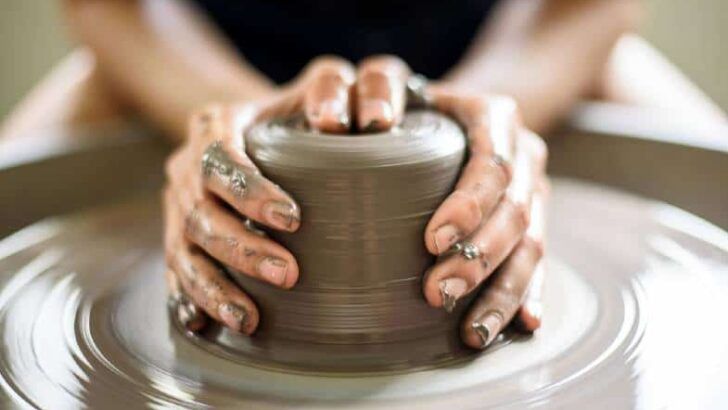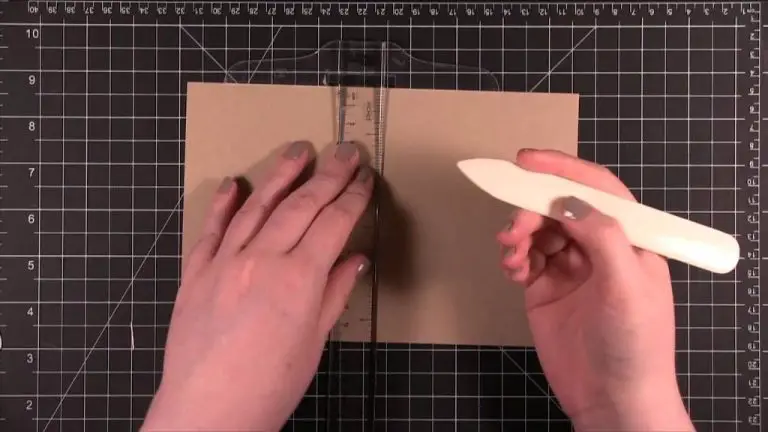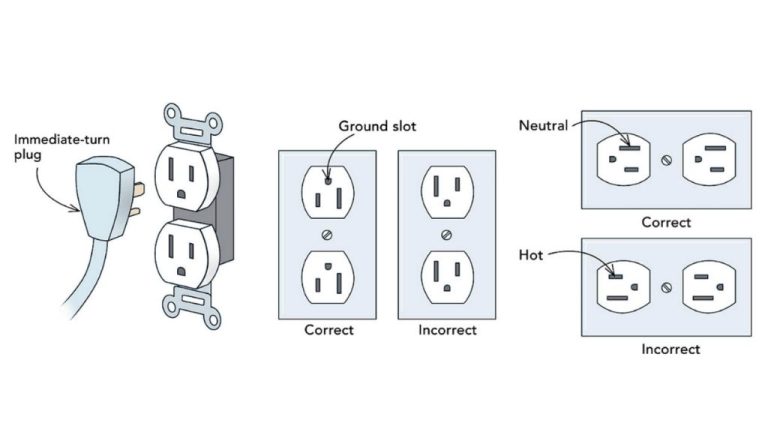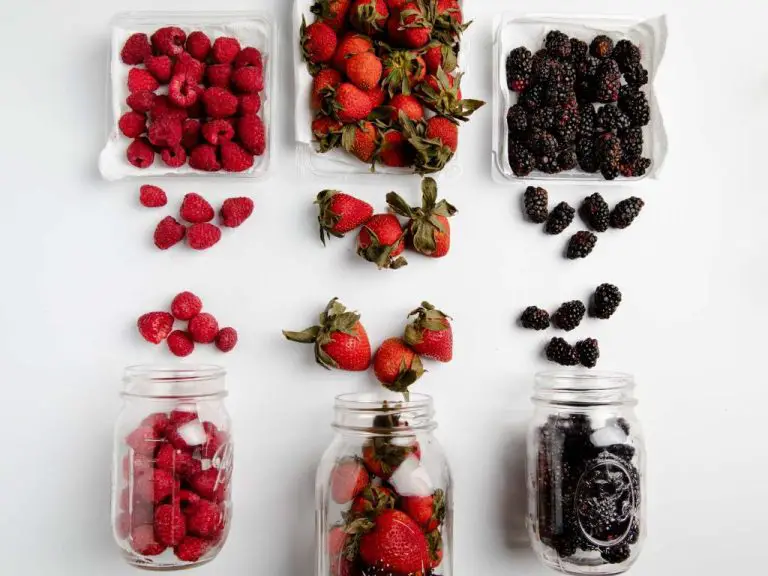Can I Put My Ceramic Pan In The Oven?
Ceramic cookware has been rising in popularity over the past few years as an alternative to traditional nonstick or stainless steel pots and pans. More and more home cooks are discovering the many benefits of ceramic cookware and switching over to this versatile, eco-friendly option. The global ceramic cookware market size was estimated at USD 7.33 billion in 2022 and is projected to reach USD 12.81 billion by 2031, expanding at a CAGR of 6.4% during 2023 – 2031. With its increased durability, safety, and ease of cleaning, it’s no wonder ceramic has become a top choice for many kitchens.
What is Ceramic Cookware?
Ceramic cookware is made from natural clay and water that is hardened through high heat, creating a non-porous, glasslike surface. This differs from traditional nonstick cookware that uses synthetic coatings like PTFE (Teflon) or PFOA applied to the surface. According to Fifti Fifti, ceramic cookware contains no harmful chemicals and is considered a safer, more environmentally friendly option compared to other nonstick pans.
The manufacturing process for ceramic cookware involves mixing clay and water to form a slurry. This liquid clay is sprayed onto the cookware mold and then fired at extremely high temperatures up to 2900°F. The intense heat hardens the clay into a smooth, durable ceramic coating that provides natural nonstick properties without using potentially toxic materials. As Ceramic Cookware Hub explains, the glass-like ceramic surface prevents food from sticking.
Benefits of Ceramic
Compared to traditional cookware materials, ceramic has several appealing benefits. For one, ceramic coatings are considered more natural and environmentally friendly than many other non-stick options. Ceramics can be made from natural clay and minerals without added chemicals. PTFE and PFOA coatings such as Teflon contain manufactured substances that persist in the environment. Many modern ceramic coatings are free of these substances, reducing toxic exposure.
Another key benefit of ceramic is its non-stick properties. Ceramics have a smooth, inert surface that prevents foods from sticking while cooking. This makes ceramic pans easy to clean and less likely to release residues into food. Unlike other non-stick coatings that can degrade and leach chemicals into food over time, ceramic’s smooth surface stays intact for longer safe use. Many manufacturers also claim that their ceramic coating is scratch resistant for enhanced durability despite daily wear and tear. As long as one cares properly for ceramic cookware, it can provide natural, non-toxic non-stick cooking for years of use.
Oven Safety
Most ceramic cookware is oven safe, but there are some limitations. Ceramic pans are generally safe to use in the oven up to temperatures around 350-450°F depending on the manufacturer (1). However, some ceramic pans may only be suitable for warming food in the oven and not high temperature cooking or baking. Always check the specific guidelines from the manufacturer before using a ceramic pan in the oven (2).
The oven-safe temperature range should be printed on the underside or packaging of ceramic cookware. Glazed ceramic and porcelain that is marketed as oven-safe can withstand high oven temperatures, while unglazed ceramic or ceramic coatings may have lower limits. Stoneware, a type of ceramic, is also typically oven-safe up to 500°F (3).
In general, quality ceramic pans from reputable brands that indicate oven-safe use should perform well in the oven for roasting, baking, broiling, and other high heat cooking methods. Just be cautious of sudden temperature changes which could potentially crack the ceramic.
Heating Ceramic Pans
One of the biggest benefits of ceramic cookware is its ability to withstand very high heat on the stovetop. Most ceramic pots and pans can be used on all stovetop burners, including induction, and can handle temperatures up to 450°F. The ceramic coating allows food to brown and sear properly without sticking. This makes ceramic great for high-heat cooking methods like stir frying, searing, and sautéing (source).
However, ceramic cookware should not be used under the high heat of the broiler in an oven. While the ceramic coating can resist high stovetop temperatures, exposing it to the intense direct heat of the broiler may cause it to crack or peel. It’s best to avoid putting ceramic pans in the oven under the broiler. Ceramic bakeware like casserole dishes are fine for oven use, but ceramic frying pans are only intended for stovetop cooking (source).
Cleaning Ceramic Cookware
When cleaning ceramic cookware by hand, it is recommended to use a soft sponge or dishcloth with warm soapy water. Avoid using abrasive scouring pads as they can scratch the ceramic surface over time. According to The Spruce, handwashing allows you to gently clean the cookware without subjecting it to the harsh environment of a dishwasher.
Ceramic cookware is often decorated with lovely patterns and designs. The Spruce notes that these decorations may fade over time with repeated dishwashing. To help preserve the decor, handwashing is ideal.
For stubborn baked-on food, fill the cookware with warm soapy water and let it soak for at least 10 minutes before scrubbing. If needed, use a non-abrasive baking soda paste with a soft sponge to gently lift residue. Refer to this source for tips on removing stains without damaging the glaze.
Be sure to completely dry ceramic cookware after washing to prevent water spots. With proper care and handwashing, ceramic cookware can last for years while maintaining its decor and nonstick properties.
Ceramic Cookware Downsides
While ceramic cookware offers some advantages, it also has some drawbacks to consider. One of the main downsides of ceramic pans and pots is that they tend to be heavier than those made from other materials like aluminum or stainless steel. The ceramic coating adds weight, with ceramic-coated pans sometimes weighing up to 50% more than a traditional aluminum pan (source).
The heavy, brittle ceramic coating also makes ceramic cookware more prone to chipping and cracking compared to other types of pots and pans. Dropping a ceramic pan or banging it against other cookware can cause the ceramic to chip and expose the pan’s base material underneath. Even small chips in the ceramic coating can allow foods to stick and make the pan harder to clean (source).
Top Ceramic Cookware Brands
When shopping for ceramic cookware, it’s important to stick with reputable brands that are known for their quality and durability. According to testing from https://happylists.co/best-products/best-ceramic-cookware-set/, some of the top ceramic cookware brands include:
GreenPan – Founded in Belgium, GreenPan is one of the most popular ceramic cookware brands. Their ceramic nonstick coating is made without PFAS or PFOA and is designed to be scratch resistant. The Valencia Pro line is versatile for all cooking methods.
Caraway – Based in the US, Caraway sells stylish ceramic cookware designed to be lightweight and easy to clean. Their pans feature a nontoxic ceramic nonstick coating and come in a variety of bold colors. Caraway is known for excellent customer service and environmentally friendly practices.
Le Creuset – Known for their enameled cast iron Dutch ovens, https://www.organicauthority.com/organic-food-recipes/best-ceramic-cookware-sets-reviewed-tested Le Creuset also makes high-end ceramic cookware. Their ceramic line features a PFOA-free nonstick interior and striking exterior enamel colors. Made in France.
Xtrema – Xtrema cookware is made from 100% ceramic, rather than just a ceramic coating. Their pans boast an inert, nonscratch cooking surface that resists staining. Xtrema cookware can withstand very high oven temperatures.

When evaluating ceramic cookware, look for brands that offer a healthy nonstick coating, excellent heat conduction, and thoughtful designs. The best ceramic pans should last for years with proper care.
Ceramic vs Other Materials
Ceramic cookware has some key differences compared to other popular cookware materials like aluminum, stainless steel, and cast iron.
Compared to aluminum, ceramic is generally safer as it does not contain traces of heavy metals that can leach into food. Aluminum is also less durable and prone to warping. However, aluminum conducts heat more efficiently than ceramic. Source
Stainless steel is more durable than ceramic, which can chip and stain over time. Stainless steel is also better for high heat searing. But ceramic generally provides better non-stick performance than stainless steel. Ceramic coatings are also free of potential harmful chemicals like PFOA sometimes used in non-stick coatings. Source
Cast iron retains heat very well compared to ceramic. But ceramic cookware is generally lighter weight and easier to clean than cast iron. Ceramic coatings provide more non-stick ability out of the box, but well-seasoned cast iron can become fairly non-stick over time. Source
So in summary, ceramic has trade-offs compared to other popular cookware materials. It offers safer non-stick ability than aluminum and stainless steel, but does not retain heat as well as cast iron or stainless steel.
The Bottom Line
In conclusion, most ceramic bakeware and dishes are generally oven safe and can withstand high heat. The key factors that determine if a ceramic piece is oven safe are:
-
Material – Pure ceramic with no coatings is more heat resistant than ceramic coated or mixed with other materials.
-
Quality – Higher quality ceramic from reputable brands holds up better than cheap ceramic.
-
Temperature – Ceramic can generally handle temperatures up to 450°F. Higher temperatures increase risk.
-
Condition – Old, cracked, or crazed ceramic is weaker and prone to breaking from oven heat.
-
Purpose – Items meant for baking like casserole dishes are safer than decorative pieces.
When in doubt, check the manufacturer’s instructions. Well-made 100% ceramic bakeware is typically fine in the oven at standard cooking temperatures if handled properly. Take care heating specialty ceramic pieces and inspect for damage before use. With common sense precautions, ceramic can be a versatile and convenient option for oven cooking and baking.




